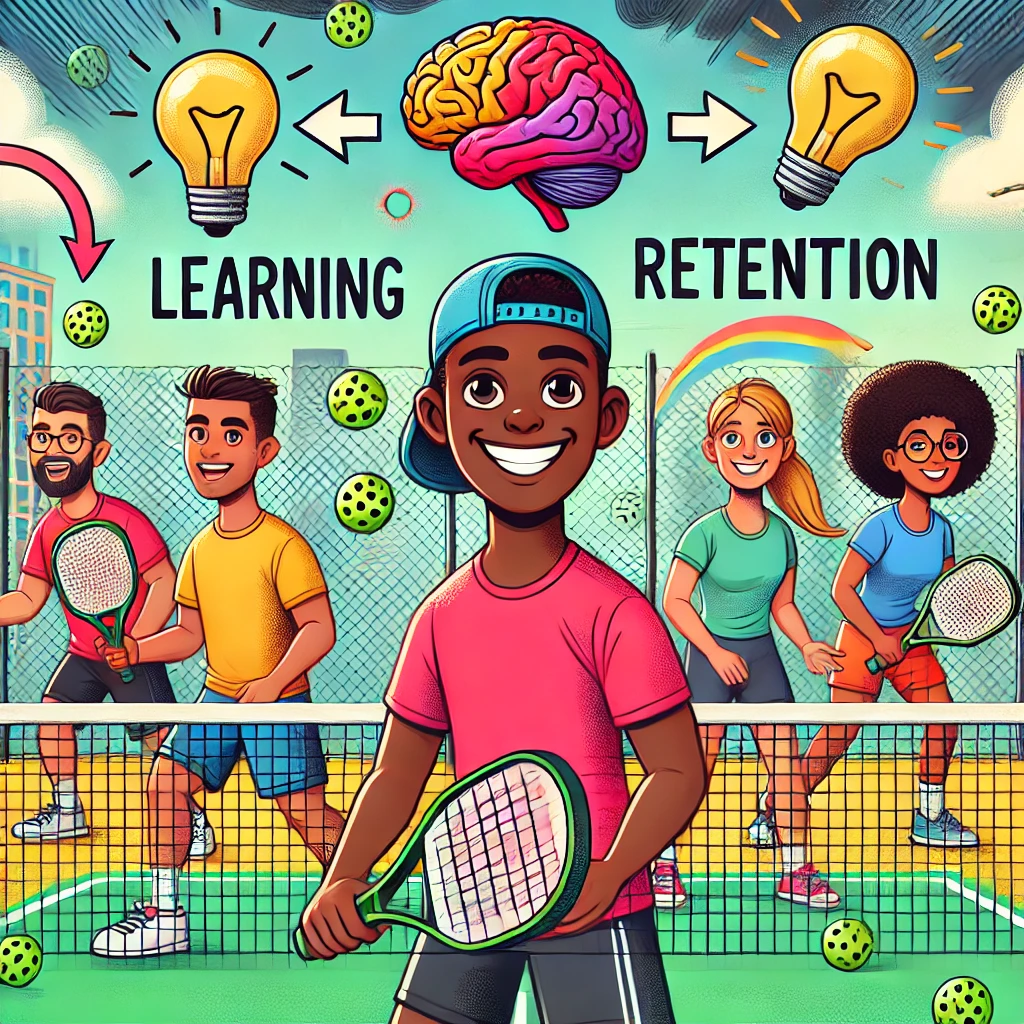
How Pickleball Can Help You Remember What You Learn
When you think about playing pickleball, your first thought might be fun rallies and quick reflexes. But did you know it can also be a powerful tool for boosting memory and retention? Whether you’re on the court or in the office, how you learn matters, and multimodal learning—engaging multiple senses—can help those lessons stick with you longer. Let’s dive into why this works and how pickleball gives your brain the boost it needs.
Why Traditional Learning Sometimes Fails
You’ve probably been in a situation where you listened to a lecture or read a document, but a week later, you couldn’t recall much of it. That’s because passive learning doesn’t activate the brain fully. It’s like trying to fill a leaky bucket—most of the information drips away.
But when you engage more senses, you’re giving your brain more “hooks” to hold on to that information. Hearing, seeing, and doing create a richer learning experience that helps store what you learn in long-term memory.
How Pickleball Activates Multimodal Learning
On the pickleball court, you’re not just passively absorbing knowledge—you’re actively involved, which is the key to improving retention.
• Movement and muscle memory: Every time you practice a new drill, like improving your serve or dinks, you’re engaging your body and reinforcing the concept through action. This is especially powerful for leadership lessons. For example, a drill on calling out shots teaches communication while embedding that skill in muscle memory.
• Visual and auditory cues: You’re constantly scanning the court, tracking the ball, and listening to your partner’s instructions. These combined inputs activate multiple parts of the brain, creating stronger memory connections.
• Immediate feedback: Unlike traditional learning, where feedback may be delayed, pickleball offers instant feedback. When you make a mistake, you adjust on the spot. This immediate correction helps your brain process the lesson more effectively and improves long-term retention.
The Science Behind It
Studies have shown that physical movement paired with learning improves the brain’s ability to retain information. When you’re moving, your body releases chemicals that enhance brain function, making it easier to encode and retrieve new information. This is why you’re more likely to remember a leadership lesson learned through an interactive pickleball drill than one learned in a passive meeting.
How This Translates to Work
The beauty of this approach is that it’s not limited to the court. Once you’ve practiced leadership drills using multimodal learning, you can bring that experience into the workplace. For example:
• Improved problem-solving: Just like you adjust your strategy on the court when the ball takes an unexpected bounce, you can adapt quickly to changes at work without missing a beat.
• Better communication: Practicing clear, concise communication during doubles play translates into smoother team collaborations in the office.
• Long-lasting takeaways: Lessons learned on the court don’t fade away like traditional training. They’re reinforced every time you play, making them part of your natural response.
Take Action: Build Retention, Build Leadership
If you want to improve retention and grow as a leader, consider stepping out of the boardroom and onto the pickleball court. By engaging your body and mind simultaneously, you’ll develop leadership skills that last.
Want to take it a step further? Check out my book, The Pickleball Leadership Playbook, where I dive deeper into how this dynamic sport can help you build trust, communication, and strategic thinking.
Ready to boost your memory through action? Grab your paddle, and let’s play to learn!
Looking to bring this concept to your team? Book a session with me for a hands-on pickleball leadership workshop. Let’s turn theory into lasting results.
#LeadershipDevelopment #PickleballLeadership #MemoryRetention #Teamwork #MultimodalLearning
